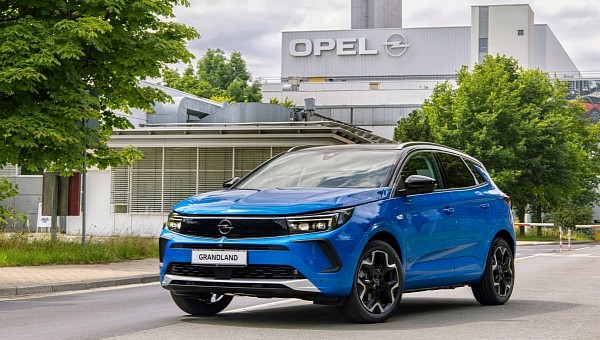As the automotive industry heads toward an increasingly electrified future, hardly a few days pass without an auto manufacturer announcing significant investments in the EV production sector. The latest example is Stellantis – the brand is investing €130M ($140.2M) in its Eisenach Assembly Plant, which will be the birthplace of Opel Grandland’s electric successor.
The Eisenach Assembly Plant in the state of Thuringia, central Germany, is where the Opel Grandland compact SUV is produced. The BEV (Battery Electric Vehicle) successor will be built on Stellantis’ new STLA Medium Platform, and production is scheduled to start in the second half of 2024.
Following the industry’s trend, Stellantis has committed to reducing its CO2 emissions through the “Dare Forward 2030” strategic plan – specifically, the automotive giant aims to halve its carbon dioxide emissions by the end of the decade. It also plans on achieving carbon neutrality by 2038.
The strategic plan goes further than that – Stellantis’ targets include 100% of passenger car sales in Europe and 50% of passenger car and light-duty truck sales in the U.S. to be BEVs by the end of the decade. Furthermore, the brand wants to double net revenues by 2030 (compared to 2021) and to become number one in customer satisfaction for products and services in every market by 2030.
The investment for the Eisenach Assembly plant is part of a major series of investments carried out by Stellantis – the company will invest more than €30B ($32.3) by 2025 in electrification and software to deliver BEVs that meet customer demands. Adding a BEV to Eisenach’s output is the next step toward Opel’s ambition of becoming a purely electric brand in Europe by 2028.
Florian Huettl, the CEO of Opel, said, “We have been building top-quality vehicles here in Thuringia for 31 years and improved our competitiveness continuously. We will stay on this clear path with the electric successor to the Opel Grandland.”
Opel celebrated the 30th anniversary of the plant last year at the Open Day event, where it also commemorated the production of 3.7 million vehicles, the first being the Opel Astra in 1992.
Production for the Opel Grandland X started back in 2017, but the compact SUV has since been updated, with its latest iteration released in 2021, which also wears the brand’s new face, the Opel Vizor. Customers can currently choose between combustion engine and plug-in hybrid variants. The top-of-the-line version is the Grandland GSe with electric all-wheel drive.
The Grandland now boasts advanced technology and assistance systems that used to be present in higher vehicle classes. One example is the adaptive IntelliLux LED Pixel light, featuring 168 LED elements. Furthermore, it comes with the Night Vision system, which can detect pedestrians and animals in the dark at a distance of up to 100 meters (328 feet) and alarm the driver.
Following the industry’s trend, Stellantis has committed to reducing its CO2 emissions through the “Dare Forward 2030” strategic plan – specifically, the automotive giant aims to halve its carbon dioxide emissions by the end of the decade. It also plans on achieving carbon neutrality by 2038.
The strategic plan goes further than that – Stellantis’ targets include 100% of passenger car sales in Europe and 50% of passenger car and light-duty truck sales in the U.S. to be BEVs by the end of the decade. Furthermore, the brand wants to double net revenues by 2030 (compared to 2021) and to become number one in customer satisfaction for products and services in every market by 2030.
The investment for the Eisenach Assembly plant is part of a major series of investments carried out by Stellantis – the company will invest more than €30B ($32.3) by 2025 in electrification and software to deliver BEVs that meet customer demands. Adding a BEV to Eisenach’s output is the next step toward Opel’s ambition of becoming a purely electric brand in Europe by 2028.
Florian Huettl, the CEO of Opel, said, “We have been building top-quality vehicles here in Thuringia for 31 years and improved our competitiveness continuously. We will stay on this clear path with the electric successor to the Opel Grandland.”
Opel celebrated the 30th anniversary of the plant last year at the Open Day event, where it also commemorated the production of 3.7 million vehicles, the first being the Opel Astra in 1992.
Production for the Opel Grandland X started back in 2017, but the compact SUV has since been updated, with its latest iteration released in 2021, which also wears the brand’s new face, the Opel Vizor. Customers can currently choose between combustion engine and plug-in hybrid variants. The top-of-the-line version is the Grandland GSe with electric all-wheel drive.
The Grandland now boasts advanced technology and assistance systems that used to be present in higher vehicle classes. One example is the adaptive IntelliLux LED Pixel light, featuring 168 LED elements. Furthermore, it comes with the Night Vision system, which can detect pedestrians and animals in the dark at a distance of up to 100 meters (328 feet) and alarm the driver.











